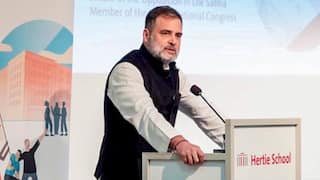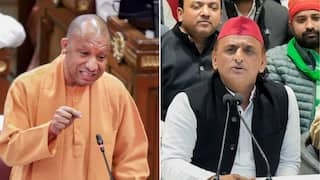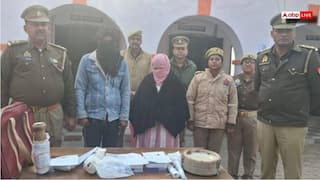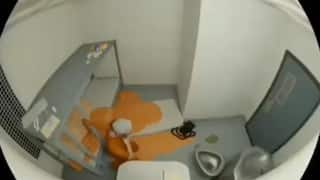Decade After God Particle Discovery, CERN Is Ready To Unravel More Secrets Of The Universe
CERN is gearing up for more discoveries a decade after the discovery of Higgs boson or God Particle. The world's most powerful accelerator is once again ready to unravel the secrets of the universe.

The world's most powerful accelerator, at the European Council for Nuclear Research (CERN), is once again ready to unravel the secrets of the building blocks of the universe starting Tuesday, July 5. The Large Hadron Collider (LHC) had been undergoing upgrade and maintenance work for more than three years.
The LHC will deliver proton collisions to experiments at an unprecedented energy of 13.6 trillion electron volts (TeV). This marks the beginning of the LHC's third run of data taking for physics.
CERN is gearing up for more discoveries a decade after the discovery of the Higgs boson or God Particle. Since April, beams have been circulating in CERN's accelerator complex. The LHC machine and its injectors were being recommissioned to operate with new higher-intensity beams and increased energy.
ALSO READ | Ten Years Of God Particle Discovery: All About The Higgs Boson, Its Link To SN Bose | EXPLAINED
LHC Will Work Continuously For Four Years
According to CERN, the LHC operators are now ready to announce "stable beams", which is the condition allowing the experiments to switch on all their subsystems and begin taking the data that will be used for physics analysis. The LHC will work continuously for four years at a record energy of 13.6 trillion electron volts (TeV), and will provide greater precision and discovery potential than ever before.
The New LHC Run Will Pave The Way For New Discoveries
In a statement released by CERN, Director for Accelerators and Technology Mike Lamont said the proton beams will be focused at the interaction points to less than 10 micron beam size, in order to increase the collision rate. The Higgs boson was discovered as part of LHC Run 1. It delivered 12 inverse femtobarns, which are a measurement of particle collisions per femtobarn. A femtobarn is 10^-39 square centimetres, an incomprehensibly small unit of area. According to Lamont, Run 3 will be delivering 280 inverse femtobarns, which is a significant increase, "paving the way for new discoveries".
LHC Run 3 Will Collect Physics Data Of Higher Quality Compared To Previous Runs
According to CERN, the four big LHC experiments have performed major upgrades to their data readout and selection systems. New detector systems and computing infrastructure have been introduced. With the help of these changes, the LHC experiments can collect significantly larger data samples, with data of higher quality compared to those obtained in previous runs.
The ATLAS and CMS collaborations announced the discovery of a new particle, which went on to be known as the Higgs Boson, on July 4, 2012. The ATLAS and CMS detectors are expected to record more collisions during Run 3 than in the two previous runs combined.
CERN Will Probe The Nature Of Higgs Boson With “Unprecedented Precision”
Since Run 3 will have increased data samples and higher collision energy, it will further expand the LHC physics programme, which is already very diverse. According to CERN, scientists at the experiments will probe the nature of the Higgs boson with unprecedented precision and in new channels. The measurement precision of numerous known processes will be improved because previously inaccessible processes can be observed.
LHC Run 3 Expected To Reveal Mysteries Such As Matter-Antimatter Symmetry
This will help address fundamental questions such as the origin of matter-antimatter asymmetry in the universe. The Big Bang must have created equal amounts of matter and antimatter in the early universe; yet, all biotic and abiotic objects on Earth, and the largest stellar objects are made almost entirely of matter. Not much antimatter is found relative to the amount of matter present in the universe. Some events must have tipped the balance. This asymmetry between matter and antimatter is known as matter-antimatter asymmetry, and one of the biggest challenges in physics is to figure out what happened to the antimatter. Run 3 of the LHC is expected to answer this question.
Properties of matter under extreme temperature and density will be studied. Scientists will also search for candidates for dark matter and for other new phenomena either directly or indirectly, through precise measurements of properties of known particles.
CERN Will Measure Higgs Boson Decay To Second-Generation Particles
CERN theorist Michelangelo Mangano said people at CERN are looking forward to measurements of the Higgs Boson decay to second-generation particles such as muons, which would be an entirely new result in the Higgs boson saga, confirming for the first time that the second-generation particles also get mass through the Higgs mechanism.
According to physics, space is filled with many invisible fields, such as gravitational field, electromagnetic field etc. One of these is known as the Higgs field, and was proposed by Francois Englert, Robert Brout and Peter Higgs. All particles acquire mass only if they come into contact with the Higgs field. If the Higgs field disappeared, all matter would cease to exist.
The Higgs particle is a vibration of the Higgs field. According to the official website of the Nobel Prize organisation, the Higgs mechanism, that explains how particles acquire mass, is what managed to rescue the Standard Model.
CERN Will Also Search For Additional Higgs Bosons
Andreas Hoecker, spokesperson of the ATLAS collaboration, said the strengths of the Higgs boson interactions with matter and force particles will be measured to unprecedented precision. People at CERN will also further their searches for Higgs boson decays to dark matter particles as well as searches for additional Higgs bosons.
Hoecker said it is not at all clear whether the Higgs mechanism realised in nature is the minimal one featuring only a single Higgs particle.
Other Interesting Findings Likely To Be Made
Using data from previous LHC runs, the LHCb experiment had studied a class of rare processes in which an unexpected difference between electrons and their cousin particles, muons, was observed. The third run of the LHC will further study these rare processes.
Chris Parkes, spokesperson of the LHCb collaboration, said data acquired during Run 3 with CERN's brand new detector will allow the precision to be improved by a factor of two. The studies performed by ATLAS and CMS will aim to understand new effects in different processes predicted by LHCb.
Luca Malgeri, spokesperson of the CMS collaboration, said this complementary approach is essential because if they are able to confirm new effects in this way, it will be a major discovery in particle physics.
Investigating The Quark-Gluon Plasma
The quark-gluon plasma (QGP) is a state of matter that existed in the first 10 microseconds after the Big Bang. The heavy-ion collision programme will allow the investigation of the QGP with unprecedented accuracy.
For the first time, a short period of oxygen collisions will be included, in order to explore the emergence of QGP-like effects in small colliding systems.
LHC Experiments To Explore Phenomena Within And Beyond The Standard Model
TOTEM, LHCf and MoEDAL are the smallest experiments at the LHC. They will explore phenomena within and beyond the Standard Model, from magnetic monopoles to neutrinos and cosmic rays.
The Standard Model of Physics describes how various particles make the universe. All matter consists of particles, which are the building blocks of nature, and are governed by four types of forces — gravitation, electromagnetism, the weak force and the strong force. The Standard Model unites the building blocks of nature and three of these four forces. Gravitation remains outside the Standard Model of particle physics.
The Higgs boson must exist for the Standard Model to be correct. Without the Higgs boson, the Standard Model would fail.
A magnetic monopole is a hypothetical particle with a magnetic charge, a property analogous to an electric charge. A magnetic pole has a single magnetic pole. A neutrino is a fundamental particle, which means it is not made of any smaller pieces. It is a subatomic particle very similar to an electron, but has no electric charge. It has a very small mass.
How To Watch The Livestream For Launch Of LHC Run 3
The launch of LHC Run 3 will be streamed live on CERN's social media channels and the Eurovision satellite link starting at 4 pm CEST on July 5 (7:30 pm IST). The LHC experiments are located at four interaction points. Live commentary from the CERN control centre will explain the operation stages that take proton beams from injection into the LHC to collisions for particle physics at the four interaction points.







































